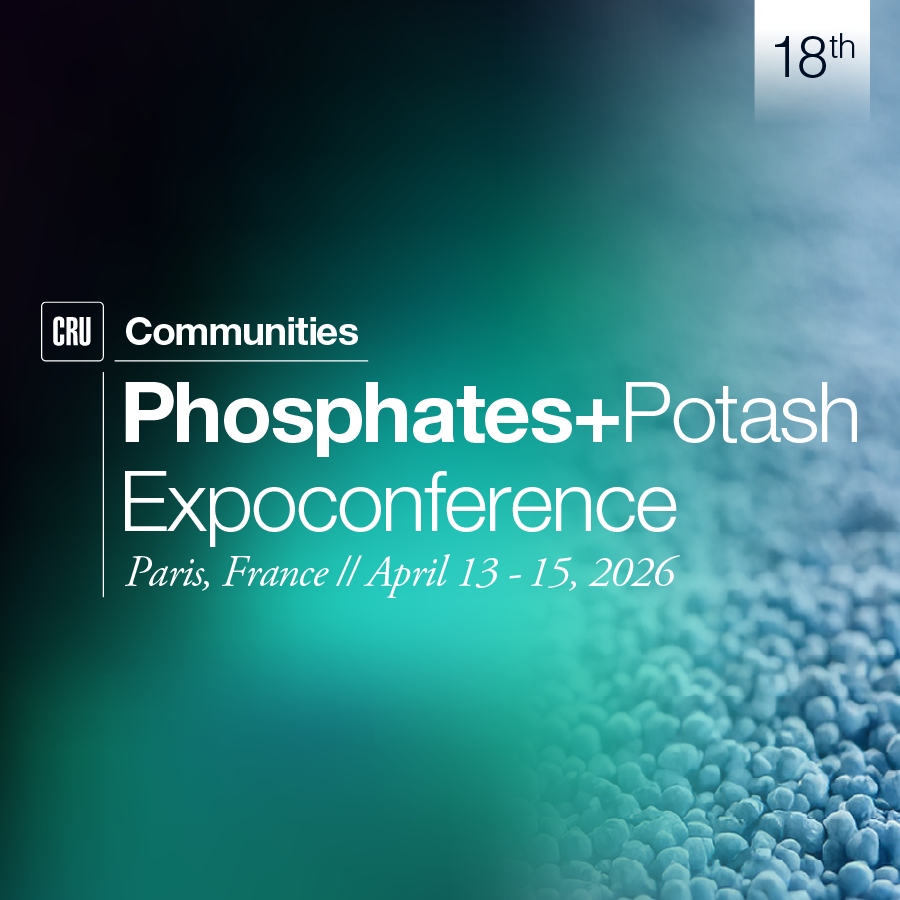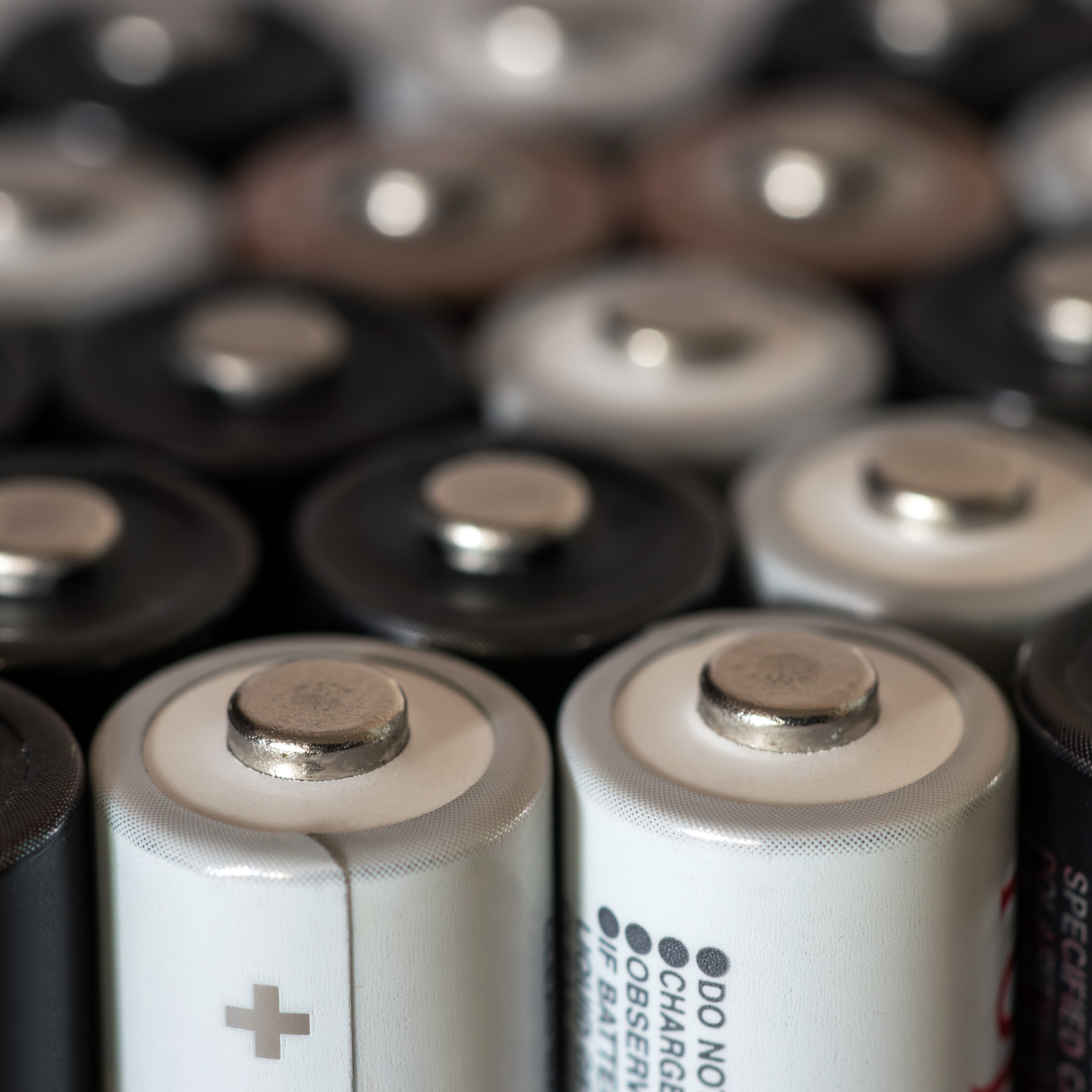As we continue to see significant growth in the uptake of electric vehicles (EVs) globally, lithium iron phosphate (LFP) batteries are becoming an increasingly important part of the cathode chemistry mix.
The result of this will be a substantial increase in global LFP demand, which is forecast to grow more than ten-fold over the next 20 years, spreading well beyond China to regions such as Europe, North America, and the rest of the Asia-Pacific.
The extent to which raw material suppliers such as phosphate producers can tap into this expanding market will depend on LFP supply-chains starting to develop outside of China. On the one hand, the restriction of these supply chains to China would lock-out many of the world’s major phosphate producers from this growing market – however, the emergence of LFP production outside of the country could result in game-changing market growth for purified phosphate suppliers in the rest of the world.
Despite this uncertainty regarding the regional splits in LFP-related phosphate demand in the future, the global purified phosphoric acid industry will likely need to double in size over the next 20 years to cater to this growth in LFP usage.
LFP batteries will play a key role in the global shift towards electric vehicles
The world is embarking on a major transition towards EVs, driven by rapid technological progress, supportive policy regimes, and shifting consumer attitudes.
Advances in technology have significantly increased the energy density associated with EV batteries, enabling longer vehicle ranges, whilst also decreasing the cost of purchasing and owning an EV to levels comparable with traditional petrol or diesel vehicles. Governments have offered subsidies and tax credits to consumers and automakers, alongside passing legislation to phase-out traditional internal combustion engines over the long term. Range anxiety – the vehicle owners’ fear of running out of battery power before reaching a charging location – continues to decline in the face of larger battery capacities and more abundant public charging infrastructure.
These factors combined are resulting in significant growth in battery electric vehicle (BEV) sales globally, which are forecast to reach 18 million units in 2025, up from 2.3 million in 2020 – equivalent to an eight-fold increase over five years. By 2045, we expect 65 million BEVs to be sold per annum, accounting for more than two-thirds of total light-duty vehicle sales, globally.
This enormous growth in the uptake of BEVs globally over the next 20 years will be coupled with LFP, and to a lesser extent, lithium manganese iron phosphate (LMFP) batteries becoming increasingly popular. While LFP/LMFP batteries accounted for 15% of the global BEV market in 2020, we expect this share to increase to 33% in 2025, and 37% in 2035.
The growing usage of LFP/LMFP batteries in BEVs is due to a wide range of factors, including their lower cost relative to nickel-rich batteries, greater longevity, and superior level of safety. In addition, the historical downside to LFP batteries – lower energy density relative to NMC batteries – has largely been alleviated by technological advances.
However, this energy density disadvantage associated with LFP has not been fully eliminated, and NMC batteries retain other benefits such as their superior performance in low temperatures, and their higher raw material value, making recycling more economically viable.
Beyond the EV market, the increased usage of LFP batteries is also being driven by their suitability for energy storage systems, where again their low-cost, durability, and thermal stability are particularly valued.
Global LFP demand is forecast to grow more than ten-fold over the next 20 years, spreading well beyond China
In 2022, global LFP demand stood at over 200 GWh, and was overwhelmingly accounted for by China, which represented over 90% of the market. The popularity of LFP batteries with Chinese manufacturers has historically been due to (i) their lower cost relative to NMC batteries, and (ii) the preferences and travel habits of Chinese EV owners, which are more geared towards shorter urban journeys in small/medium-sized vehicles (compared to the US, for example, where SUVs are more popular).
Technical improvements in battery design, electric motors, power electronics, and vehicle lightweighting have alleviated the traditional range disadvantage associated with LFP. More recently, innovations pioneered by Chinese manufacturers, such as module-less 'Cell-to-Pack' battery configurations with large-format cells, have enabled further cost savings and energy density improvements at the battery pack level. This has further contributed to the increased uptake of LFP in China, whilst also adding to its attractiveness to automakers in other regions.
These factors, in addition to the traditional advantages associated with LFP such as low-cost, safety, and durability, will help to drive increasing adoption of the chemistry in regions such as Europe, North America, and other parts of the Asia-Pacific. Indeed, our forecasts show global LFP demand increasing more than ten-fold over the next ~20 years, with ~60% of demand expected to be based outside of China at the end of the period. This means that, over the medium and long-term horizon, the LFP story will no longer be limited to China, but will instead become more relevant to automakers, battery producers, and raw material suppliers in the rest of the world.
For phosphate producers outside of China to tap into the LFP market, cathode capacity needs to be built outside of the country
Currently, virtually all the world’s LFP cathode capacity is based in China. The iron phosphate that is used to produce those cathodes is also sourced domestically, as China is self-sufficient in phosphate and is already a significant importer of iron ore for its steel industry.
The implication of this for phosphate producers in particular, is that if LFP cathodes continue to be produced predominantly in China over the long term, the iron phosphate precursor and phosphate raw materials that are used in their production will continue to be sourced domestically as well. This would essentially lock-out phosphate producers outside of China from the LFP industry and prevent them from enjoying the premiums associated with this growing market.
The key question for phosphate producers is whether LFP cathode supply (and therefore potentially iron phosphate supply) will proliferate geographically over the long term in a similar way to LFP demand.
Part of the answer to this question lies in the current pattern of LFP project announcements that we are seeing in regions such as North America and Europe.
Recently, we have seen a considerable number of announcements for new LFP battery cell plants in North America and Europe for construction over the next 5-10 years, with total planned cell capacity surpassing 150 GWh and 200 GWh in these regions, respectively.
However, these battery cell projects have rarely included the upstream cathode capacity to supply the plants captively. In addition, the planned volume of standalone cathode capacity in these regions falls far short of the necessary supply for the planned battery cell plants to source domestically. Our estimates show that planned LFP cathode capacity in North America and Europe is only sufficient to cater to 13% and 7% of announced battery cell capacity, resulting in cathode deficits of 87% and 93%, respectively.
If we do not start to see many more announcements for LFP cathode projects in regions outside of China over the coming months and years, cathode would still need to be imported into regions such as North America and Europe, even if they succeed in building their own localised battery cell capacity. Hence, the phosphate required for those LFP batteries would still be produced and consumed in China.
The extent to which new legislation can incentivise the localised production of LFP cathodes in North America and Europe remains to be seen. We have seen the passing of the Inflation Reduction Act (IRA) in the US in August 2022, which incentivises the domestic production of electric vehicle batteries and battery components. Although this has played some role in incentivising new LFP battery cell projects, we are yet to see the same effect playout on the cathode side. Similar legislation is being planned for the European Union with the EU Critical Raw Materials Act, although this legislation is at an earlier stage than its equivalent in the USA, and so its likely effectiveness in encouraging domestic LFP cathode projects is even less well-understood.
Whilst the effects of LFP demand growth on regional purified acid demand is uncertain, the global industry will likely need to double in size over the next 20 years
The charts below show our long-term forecasts for purified phosphoric acid demand in North America and Europe, with three scenarios illustrating how the location of LFP cathode and iron phosphate production could affect demand in those regions.
In Scenario 1, where China continues to dominate global LFP cathode and iron phosphate production despite growing LFP demand in the rest of the world, we see a minimal uplift to LFP-related purified acid demand in North America and Europe – totalling +4% in 2045. In these circumstances, these two regions would have to import cathode from China to feed their battery cell plants.
In Scenario 2, we show purified phosphoric acid demand if these regions were to fully localise their production of LFP cathode and iron phosphate, no longer relying on imports from China. Here, we see considerable upside to purified acid demand in North America and Europe, with demand 60% higher in North America in 2045, while the European purified acid market would have to nearly double in size (+90%).
In Scenario 3, where we combine the localised production of LFP cathode and iron phosphate with an upside LFP demand forecast, the increment to purified acid demand in North America is +80%, whereas in Europe it is +130% – both representing game-changing market growth for both domestic suppliers and exporters to these markets.
For China, Scenario 1 represents a situation in which it continues to be the world’s supplier of LFP cathode, which would more than double the size of its purified acid market in 2045 (+110%).
This, coupled with an upside LFP forecast, would see demand levels grow to a huge 150% above non LFP-related acid demand in the same year (Scenario 3).
However, a scenario where China only produces enough LFP cathode to supply its own domestic needs (Scenario 2), coupled with our base-case LFP demand forecast, results in this uplift to demand cut to +50% – still significant, but not quite the demand uplift associated with China remaining as the world’s LFP cathode supplier.
At a global level – regardless of whether China continues to dominate LFP cathode and iron phosphate production, or other regions become more self-sufficient – our long-term forecasts show overall demand for purified phosphoric acid far outstripping current global capacity in the long term, primarily due to this growth in the LFP sector.
In our base case, LFP demand growth would require global purified phosphoric acid capacity to nearly double in size by 2045 relative to current levels (+95%), whilst our upside scenario requires capacity growth as high as 120%.
The magnitude of this LFP demand growth globally, and the uncertainty regarding the extent to which it will be distributed geographically, presents a number of strategic questions for existing and potential stakeholders in the industry – whether they be phosphate producers, other raw material suppliers, cathode and battery manufacturers, investors, or policymakers. These questions span multiple areas, including the likely effectiveness of legislation in the West to encourage localised battery supply-chains, the potential price premiums that phosphate producers supplying the LFP sector may enjoy, and the likely importance of first-mover advantage for phosphate producers entering the LFP industry outside of China.
We look forward to exploring how CRU Consulting can help you answer these questions. Our team is ready to support your organisation as it plans and prepares for this significant growth in the LFP industry.
Find out more about CRU’s Consulting services
CRU consulting’s unique services are the product of both our in-depth understanding of the markets and close contact with our customers. Tell us about the challenges your business faces and find out how collaborating with CRU could make the difference.
The extent to which raw material suppliers such as phosphate producers can tap into this expanding market will depend on LFP supply-chains starting to develop outside of China. On the one hand, the restriction of these supply chains to China would lock-out many of the world’s major phosphate producers from this growing market – however, the emergence of LFP production outside of the country could result in game-changing market growth for purified phosphate suppliers in the rest of the world.
Despite this uncertainty regarding the regional splits in LFP-related phosphate demand in the future, the global purified phosphoric acid industry will likely need to double in size over the next 20 years to cater to this growth in LFP usage.
LFP batteries will play a key role in the global shift towards electric vehicles
The world is embarking on a major transition towards EVs, driven by rapid technological progress, supportive policy regimes, and shifting consumer attitudes.
Advances in technology have significantly increased the energy density associated with EV batteries, enabling longer vehicle ranges, whilst also decreasing the cost of purchasing and owning an EV to levels comparable with traditional petrol or diesel vehicles. Governments have offered subsidies and tax credits to consumers and automakers, alongside passing legislation to phase-out traditional internal combustion engines over the long term. Range anxiety – the vehicle owners’ fear of running out of battery power before reaching a charging location – continues to decline in the face of larger battery capacities and more abundant public charging infrastructure.
These factors combined are resulting in significant growth in battery electric vehicle (BEV) sales globally, which are forecast to reach 18 million units in 2025, up from 2.3 million in 2020 – equivalent to an eight-fold increase over five years. By 2045, we expect 65 million BEVs to be sold per annum, accounting for more than two-thirds of total light-duty vehicle sales, globally.
This enormous growth in the uptake of BEVs globally over the next 20 years will be coupled with LFP, and to a lesser extent, lithium manganese iron phosphate (LMFP) batteries becoming increasingly popular. While LFP/LMFP batteries accounted for 15% of the global BEV market in 2020, we expect this share to increase to 33% in 2025, and 37% in 2035.
The growing usage of LFP/LMFP batteries in BEVs is due to a wide range of factors, including their lower cost relative to nickel-rich batteries, greater longevity, and superior level of safety. In addition, the historical downside to LFP batteries – lower energy density relative to NMC batteries – has largely been alleviated by technological advances.
However, this energy density disadvantage associated with LFP has not been fully eliminated, and NMC batteries retain other benefits such as their superior performance in low temperatures, and their higher raw material value, making recycling more economically viable.
Beyond the EV market, the increased usage of LFP batteries is also being driven by their suitability for energy storage systems, where again their low-cost, durability, and thermal stability are particularly valued.
Global LFP demand is forecast to grow more than ten-fold over the next 20 years, spreading well beyond China
In 2022, global LFP demand stood at over 200 GWh, and was overwhelmingly accounted for by China, which represented over 90% of the market. The popularity of LFP batteries with Chinese manufacturers has historically been due to (i) their lower cost relative to NMC batteries, and (ii) the preferences and travel habits of Chinese EV owners, which are more geared towards shorter urban journeys in small/medium-sized vehicles (compared to the US, for example, where SUVs are more popular).
Technical improvements in battery design, electric motors, power electronics, and vehicle lightweighting have alleviated the traditional range disadvantage associated with LFP. More recently, innovations pioneered by Chinese manufacturers, such as module-less 'Cell-toPack' battery configurations with large-format cells, have enabled further cost savings and energy density improvements at the battery pack level. This has further contributed to the increased uptake of LFP in China, whilst also adding to its attractiveness to automakers in other regions.
These factors, in addition to the traditional advantages associated with LFP such as lowcost, safety, and durability, will help to drive increasing adoption of the chemistry in regions such as Europe, North America, and other parts of the Asia-Pacific. Indeed, our forecasts show global LFP demand increasing more than ten-fold over the next ~20 years, with ~60% of demand expected to be based outside of China at the end of the period. This means that, over the medium and long-term horizon, the LFP story will no longer be limited to China, but will instead become more relevant to automakers, battery producers, and raw material suppliers in the rest of the world.
For phosphate producers outside of China to tap into the LFP market, cathode capacity needs to be built outside of the country
Currently, virtually all the world’s LFP cathode capacity is based in China. The iron phosphate that is used to produce those cathodes is also sourced domestically, as China is self-sufficient in phosphate and is already a significant importer of iron ore for its steel industry.
The implication of this for phosphate producers in particular, is that if LFP cathodes continue to be produced predominantly in China over the long term, the iron phosphate precursor and phosphate raw materials that are used in their production will continue to be sourced domestically as well. This would essentially lock-out phosphate producers outside of China from the LFP industry and prevent them from enjoying the premiums associated with this growing market.
The key question for phosphate producers is whether LFP cathode supply (and therefore potentially iron phosphate supply) will proliferate geographically over the long term in a similar way to LFP demand.
Part of the answer to this question lies in the current pattern of LFP project announcements that we are seeing in regions such as North America and Europe.
Recently, we have seen a considerable number of announcements for new LFP battery cell plants in North America and Europe for construction over the next 5-10 years, with total planned cell capacity surpassing 150 GWh and 200 GWh in these regions, respectively.
However, these battery cell projects have rarely included the upstream cathode capacity to supply the plants captively. In addition, the planned volume of standalone cathode capacity in these regions falls far short of the necessary supply for the planned battery cell plants to source domestically. Our estimates show that planned LFP cathode capacity in North America and Europe is only sufficient to cater to 13% and 7% of announced battery cell capacity, resulting in cathode deficits of 87% and 93%, respectively.
If we do not start to see many more announcements for LFP cathode projects in regions outside of China over the coming months and years, cathode would still need to be imported into regions such as North America and Europe, even if they succeed in building their own localised battery cell capacity. Hence, the phosphate required for those LFP batteries would still be produced and consumed in China.
The extent to which new legislation can incentivise the localised production of LFP cathodes in North America and Europe remains to be seen. We have seen the passing of the Inflation Reduction Act (IRA) in the US in August 2022, which incentivises the domestic production of electric vehicle batteries and battery components. Although this has played some role in incentivising new LFP battery cell projects, we are yet to see the same effect playout on the cathode side. Similar legislation is being planned for the European Union with the EU Critical Raw Materials Act, although this legislation is at an earlier stage than its equivalent in the USA, and so its likely effectiveness in encouraging domestic LFP cathode projects is even less well-understood.
Whilst the effects of LFP demand growth on regional purified acid demand is uncertain, the global industry will likely need to double in size over the next 20 years
The charts below show our long-term forecasts for purified phosphoric acid demand in North America and Europe, with three scenarios illustrating how the location of LFP cathode and iron phosphate production could affect demand in those regions.
In Scenario 1, where China continues to dominate global LFP cathode and iron phosphate production despite growing LFP demand in the rest of the world, we see a minimal uplift to LFP-related purified acid demand in North America and Europe – totalling +4% in 2045. In these circumstances, these two regions would have to import cathode from China to feed their battery cell plants.
In Scenario 2, we show purified phosphoric acid demand if these regions were to fully localise their production of LFP cathode and iron phosphate, no longer relying on imports from China. Here, we see considerable upside to purified acid demand in North America and Europe, with demand 60% higher in North America in 2045, while the European purified acid market would have to nearly double in size (+90%).
In Scenario 3, where we combine the localised production of LFP cathode and iron phosphate with an upside LFP demand forecast, the increment to purified acid demand in North America is +80%, whereas in Europe it is +130% – both representing game-changing market growth for both domestic suppliers and exporters to these markets.
For China, Scenario 1 represents a situation in which it continues to be the world’s supplier of LFP cathode, which would more than double the size of its purified acid market in 2045 (+110%).
This, coupled with an upside LFP forecast, would see demand levels grow to a huge 150% above non LFP-related acid demand in the same year (Scenario 3).
However, a scenario where China only produces enough LFP cathode to supply its own domestic needs (Scenario 2), coupled with our base-case LFP demand forecast, results in this uplift to demand cut to +50% – still significant, but not quite the demand uplift associated with China remaining as the world’s LFP cathode supplier.
At a global level – regardless of whether China continues to dominate LFP cathode and iron phosphate production, or other regions become more self-sufficient – our long-term forecasts show overall demand for purified phosphoric acid far outstripping current global capacity in the long term, primarily due to this growth in the LFP sector.
In our base case, LFP demand growth would require global purified phosphoric acid capacity to nearly double in size by 2045 relative to current levels (+95%), whilst our upside scenario requires capacity growth as high as 120%.
The magnitude of this LFP demand growth globally, and the uncertainty regarding the extent to which it will be distributed geographically, presents a number of strategic questions for existing and potential stakeholders in the industry – whether they be phosphate producers, other raw material suppliers, cathode and battery manufacturers, investors, or policymakers. These questions span multiple areas, including the likely effectiveness of legislation in the West to encourage localised battery supply-chains, the potential price premiums that phosphate producers supplying the LFP sector may enjoy, and the likely importance of first-mover advantage for phosphate producers entering the LFP industry outside of China.
We look forward to exploring how CRU Consulting can help you answer these questions. Our team is ready to support your organisation as it plans and prepares for this significant growth in the LFP industry.















